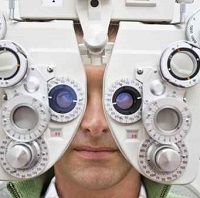Article
Encephalitis Can Alter Vision but Spares Retinal Structure
Author(s):
Encephalitis can change vision, but it does not alter the retinal structure, a German study found.

Patients who have anti-NMDA receptor (NMDAR) encephalitis may have mild visual dysfunction, but the retinal structure is not altered, according to a recent study. Authored by Alexander U. Brandt, MD, of the NeuroCure Clinical Research Center and Department of Neurology at the Charity University of Medicine in Berlin, Germany, the study was published in Neurology on February 2, 2016.
“The objective of this study was to investigate the retina for potential structural damage after NMDAR encephalitis as well as potential visual function changes,” said the researchers. The study design was cross-sectional and observational, and the participants were drawn from the out-patient clinic at the Charity University of Medicine. There were 31 participants included, and they were matched to healthy controls. Of those with NMDAR, 14 were clinically impaired, while 17 had mild or no residual clinical impairment.
The participants underwent visual function testing, and the researchers report measuring “the peripapillary retinal nerve fiber layer thickness” and performing “macular volume scans.” They then compared the measurements between the patients with NMDAR and the healthy controls.
The researchers believe that there are 2 possible mechanisms causing the mild loss of visual function in patients with NMDAR. In describing the first one they say, “as several retinal neuron subtypes express NMDAR, the afferent visual system, including the retina, might be affected directly.” The second possibility, they say, is that, “the visual function deficit perhaps does not result from alterations in the afferent visual pathway, but at least in part from corical processing deficits during visual testing.”
Several limitations to this study exist. For example, the researchers say, “due to the exploratory nature of this study, we were only able to include high-contrast VA and low-contrast sensitivity testing in addition to OCT and basic neuro-ophthalmologic examination.” They add that “the clinical relevance of visual function deficits -- beyond insight into the pathophysiology of the disease” remains to be investigated.
However, this study does offer some early evidence of visual dysfunction in patients recovering from NMDAR encephalitis. The researchers conclude, “visual function examination may provide information to the clinician about underlying changes in disease activity when performed longitudinally” and suggest that “clarifying the clinical significance of visual dysfunction in NMDAR encephalitis warrants further investigation, including longitudinal studies.”





